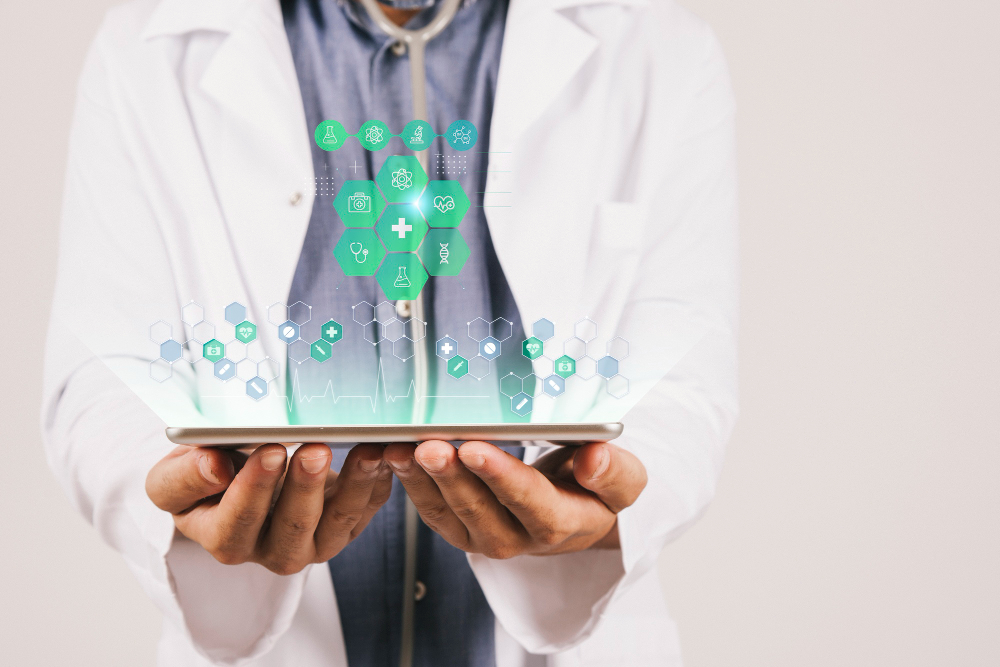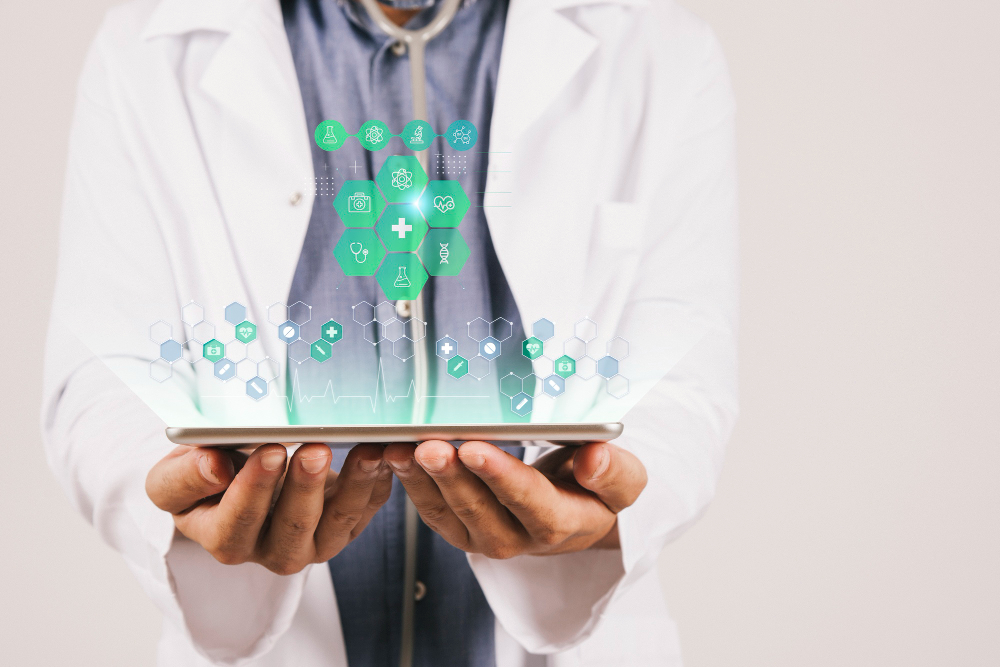Revolutionizing Healthcare: The Power and Potential of Medical Software Development Services

Strong 8k brings an ultra-HD IPTV experience to your living room and your pocket.
Introduction
In an era where digital transformation is redefining every industry, healthcare is experiencing a radical evolution powered by software innovation. Medical software development services have become instrumental in enhancing patient care, streamlining operations, and ensuring regulatory compliance. From telemedicine platforms and electronic health records (EHRs) to AI-driven diagnostic tools and mobile health apps, the scope of custom healthcare software is vast and rapidly expanding.
This article explores the landscape of medical software development services, highlighting their key components, benefits, challenges, and future trends. Whether you are a healthcare provider, technology investor, or digital health startup, understanding the value and intricacies of these services is crucial for success in today’s competitive and regulated healthcare market.
What Are Medical Software Development Services?
Medical software development services refer to the design, development, deployment, and maintenance of customized software solutions tailored to meet the needs of healthcare organizations, practitioners, and patients. These services often include:
Custom EHR and EMR software
Telemedicine and remote patient monitoring platforms
Health Information Exchange (HIE) systems
Medical billing and practice management solutions
Medical imaging and diagnostics software
Mobile health (mHealth) applications
AI and machine learning algorithms for diagnostics and treatment
Wearable device integrations
Regulatory compliance tools (HIPAA, HL7, FHIR, etc.)
These services are typically provided by specialized software development companies that understand both the technical and regulatory demands of the healthcare domain.
Key Components of Medical Software Solutions
Each type of healthcare software solution serves a distinct purpose, but they often share common components:
A. User Interfaces (UI/UX):
Clean, intuitive design is critical. Doctors, nurses, and patients must navigate software with minimal friction.
B. Data Integration:
Healthcare software must interact seamlessly with existing hospital information systems (HIS), lab systems, pharmacy systems, and more.
C. Security and Compliance:
Solutions must comply with regulations such as HIPAA (USA), GDPR (EU), and others, incorporating robust encryption, access control, and audit trails.
D. Interoperability Standards:
Software must support standards like HL7, FHIR, and DICOM to ensure compatibility across platforms and institutions.
E. Scalability and Cloud Infrastructure:
Cloud-based solutions enable better data storage, real-time access, and improved collaboration between providers.
Benefits of Medical Software Development Services
A. Improved Patient Care
Digital health tools provide clinicians with accurate, up-to-date patient information, enabling faster diagnoses and personalized treatment plans.
B. Enhanced Efficiency and Automation
Automating administrative tasks such as billing, scheduling, and reporting reduces human error and saves time.
C. Better Decision-Making
AI-powered analytics and decision support systems offer evidence-based insights that improve clinical outcomes.
D. Greater Accessibility
Telemedicine platforms allow patients in rural or underserved areas to access quality care remotely.
E. Streamlined Compliance
Software solutions designed for compliance help healthcare institutions avoid costly legal penalties.
Popular Use Cases in the Healthcare Industry
A. Electronic Health Record (EHR) Systems
Custom EHR systems enable providers to maintain comprehensive digital patient records, supporting better coordination and continuity of care.
B. Telehealth and Virtual Consultations
The COVID-19 pandemic accelerated telehealth adoption. Custom telemedicine platforms now integrate video calls, chat, e-prescriptions, and billing.
C. Remote Patient Monitoring (RPM)
RPM software connects with wearable devices to track vital signs like heart rate, glucose levels, and blood pressure in real-time.
D. AI-Driven Diagnostic Tools
Machine learning models can now detect anomalies in X-rays, MRIs, and lab reports, assisting radiologists and pathologists.
E. mHealth Applications
Mobile health apps offer medication reminders, mental health support, fitness tracking, and chronic disease management.
F. Healthcare CRM Systems
CRM tools are used to manage patient relationships, improve communication, and increase patient satisfaction and retention.
Development Process: From Idea to Deployment
A well-defined development lifecycle is essential for the success of any medical software project:
Discovery & Requirements Gathering
Understanding the healthcare institution’s needs, target users, workflow, and regulatory obligations.
Design & Prototyping
Creating wireframes, UI/UX mockups, and technical architecture.
Development
Coding the application using suitable frameworks and technologies (Java, .NET, Python, React, Flutter, etc.).
Testing & Quality Assurance
Rigorous testing for usability, performance, security, and compliance. Includes manual, automated, and user acceptance testing (UAT).
Deployment
Setting up the production environment—often cloud-based (AWS, Azure, GCP)—and launching the solution.
Maintenance & Support
Ongoing support ensures the software stays compliant, secure, and updated with new features or integrations.
Technologies Powering Medical Software
Medical software development services utilize a broad range of modern technologies:
Frontend: React, Angular, Vue.js
Backend: Node.js, .NET, Java, Python (Django, Flask)
Mobile: Flutter, React Native, Swift, Kotlin
Databases: PostgreSQL, MongoDB, MySQL
AI/ML: TensorFlow, PyTorch, OpenCV
Cloud: AWS, Azure, Google Cloud
APIs: FHIR, HL7, DICOM integrations
DevOps: Docker, Kubernetes, Jenkins, Terraform
These technologies are chosen based on scalability, security, and compatibility with healthcare standards.
Regulatory and Security Considerations
Medical software is one of the most heavily regulated domains. Developers must adhere to strict standards:
A. HIPAA (Health Insurance Portability and Accountability Act) – USA
Mandates protection of patient data and secure transmission.
B. GDPR (General Data Protection Regulation) – EU
Ensures the privacy of individuals’ personal health information.
C. ISO 13485
Specifies quality management requirements for medical devices and associated software.
D. IEC 62304
Governs the software development lifecycle for medical devices.
E. FDA Approval (U.S. Food and Drug Administration)
For certain software-as-a-medical-device (SaMD) products, FDA clearance may be required.
Compliance ensures software safety, functionality, and legal operation in regulated markets.
Challenges in Medical Software Development
A. High Development Costs
Developing compliant and secure healthcare software is expensive and resource-intensive.
B. Complex Integration
Legacy systems in hospitals often lack APIs or documentation, making integration difficult.
C. Evolving Regulations
Constantly changing rules require updates and audits, increasing the development burden.
D. Data Security Threats
Cyberattacks targeting healthcare systems are rising, necessitating advanced security protocols.
E. User Adoption
Training and change management are crucial. Without proper onboarding, even the best software may go unused.
Selecting the Right Medical Software Development Partner
Choosing a vendor with deep domain expertise is critical. Key considerations include:
Experience in healthcare-specific software
Familiarity with regulatory compliance (HIPAA, HL7, etc.)
Portfolio of similar successful projects
Availability of long-term support and maintenance
Security credentials and certifications
Customization capabilities and scalability
Strong communication and agile development methodologies
Future Trends in Medical Software Development
A. Artificial Intelligence and Predictive Analytics
AI will increasingly support clinical decision-making, preventive care, and operational forecasting.
B. Blockchain for Health Records
Decentralized, tamper-proof patient records will enhance data sharing and transparency.
C. IoT and Wearables Integration
Health wearables will offer more real-time data, enabling proactive interventions.
D. AR/VR in Medical Training and Surgery
Immersive simulations will become mainstream in education and even live procedures.
E. No-Code/Low-Code Development
These platforms will empower healthcare professionals to build apps without technical backgrounds.
F. Interoperability Ecosystems
More focus will be placed on FHIR-based systems that enable seamless data exchange across providers.
Conclusion
Medical software development services are no longer a luxury but a necessity in modern healthcare. These digital tools are revolutionizing the way care is delivered, managed, and experienced. From enhancing operational efficiency to improving patient outcomes and compliance, custom healthcare software solutions are foundational to the future of medicine.
To fully leverage this transformation, healthcare providers must partner with experienced development firms that understand the complex interplay between technology, patient care, and regulatory compliance. With continued innovation, the horizon of possibilities in medical software development is not only vast—it’s vital.
Note: IndiBlogHub features both user-submitted and editorial content. We do not verify third-party contributions. Read our Disclaimer and Privacy Policyfor details.







